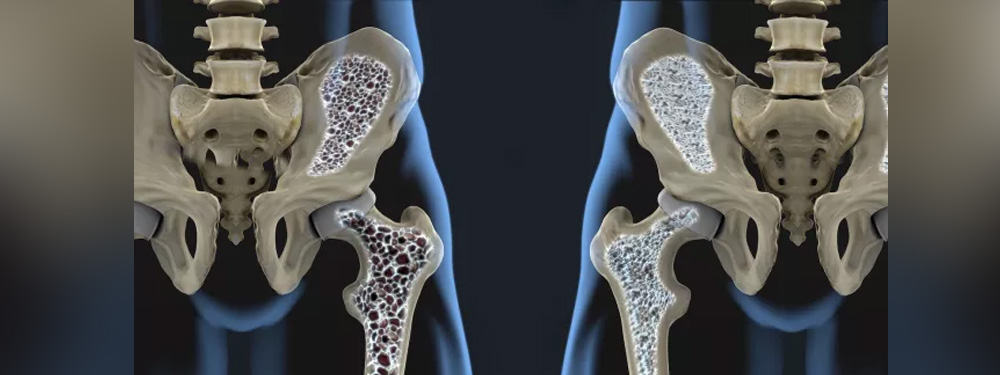Bone density disorders involve abnormalities of bone metabolism. Bone metabolism is regulated by several hormones including parathyroid hormone (PTH), estrogen, testosterone as well as vitamins and minerals including calcium,Vitamin D, phosphate, and magnesium. Abnormal bone density can cause bone to be weakened and break easily.
Bone Density Disorders

Osteoporosis
Osteoporosis causes the structural integrity of bone to be brittle, porous (full of holes), and consequently easily broken or fractured even with minimal trauma such as falling from standing height. Osteoporosis is considered a ‘silent disease’ as many will not realize they are being affected by this condition until they actually break a bone and then are subsequently diagnosed. This condition typically occurs in post-menopausal women, but can also affect men too. Patients who take chronic moderate to high dose corticosteroids can be at risk for developing osteoporosis too, regardless of their age. Osteoporosis is diagnosed with a specialized x-ray called a DEXA scan (dual-energy x-ray absorptiometry).
Osteopenia
Osteopenia is the term for describing ‘pre-osteoporosis’ whereby the bone density is mild to moderately weakened from normal, but not so severely weakened to the degree as osteoporosis. This is quantified as a number measured by the DEXA scan. In patients who have osteopenia, it is critical to reduce modifiable risk factors that could cause progression to osteoporosis.
Paget’s Disease
Paget’s disease is an uncommon chronic bone disorder whereby there is dysregulation of the normal life cycle of bone breakdown and regeneration. In Paget’s disease, bone breaks down in certain areas faster than it can be rebuilt, which results in fragile and deformed bone. This usually involves specific areas such as the pelvis, skull, spine and legs. Symptoms can include bone pain, tingling or weakness, or bone deformities which could lead to complications, including bone fractures, osteoarthritis, nerve damage, heart failure and rarely bone cancer. The cause of Paget’s disease is not yet known, but risk factors include older age, being male, European ancestry, or a family history of Paget’s disease.
How does Lomibao Rheumatology & Wellness Care treat Bone Density Disorders?
The initial treatment for bone density disorders include reducing modifiable risk factors, eating a nutrient dense diet with calcium and vitamin D, and weight-bearing exercise to help prevent further bone loss and strengthen already weak bones. When the diet is not enough, vitamins and supplements may be prescribed. The goal of medications used to treat bone density disorders is to reduce further bone loss and in some cases, increase bone density. In certain cases the outdated class of medication called bisphosphonates may be used, such as Reclast infusion for treatment of Paget’s disease. More modern and newer injectables offered by Lomibao Rheumatology & Wellness Care for treatment of osteoporosis are Prolia and Evenity. Wellness services for bone density disorders – coming soon!

